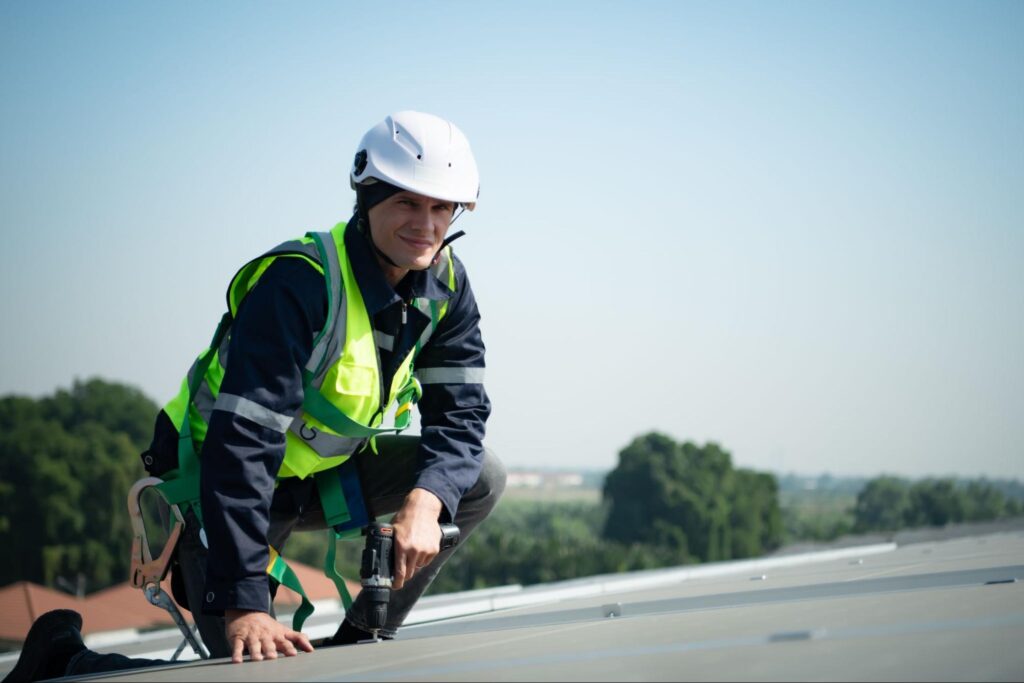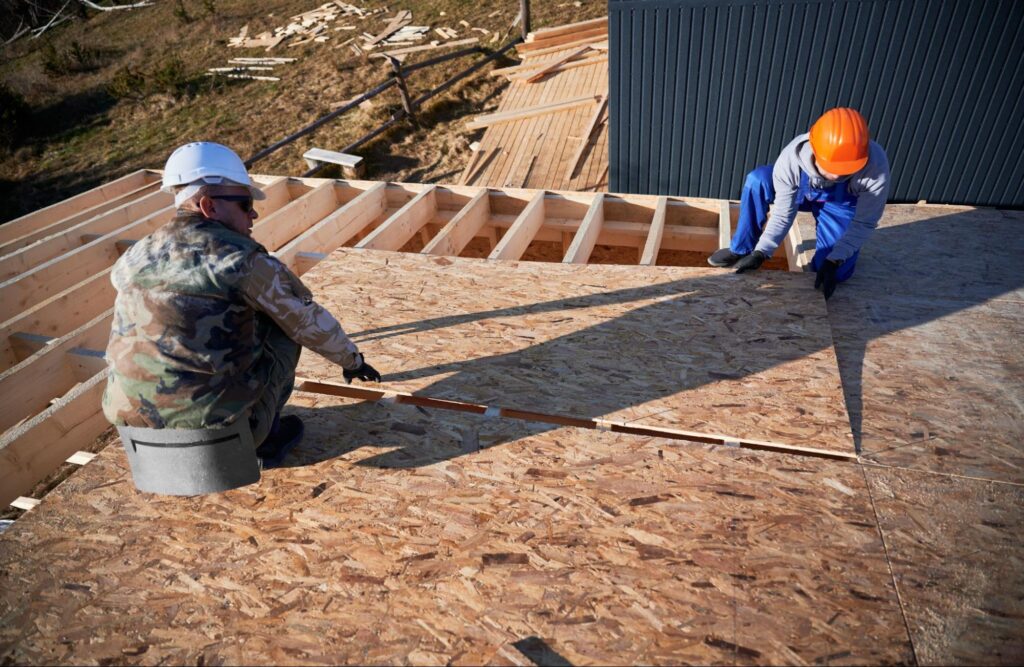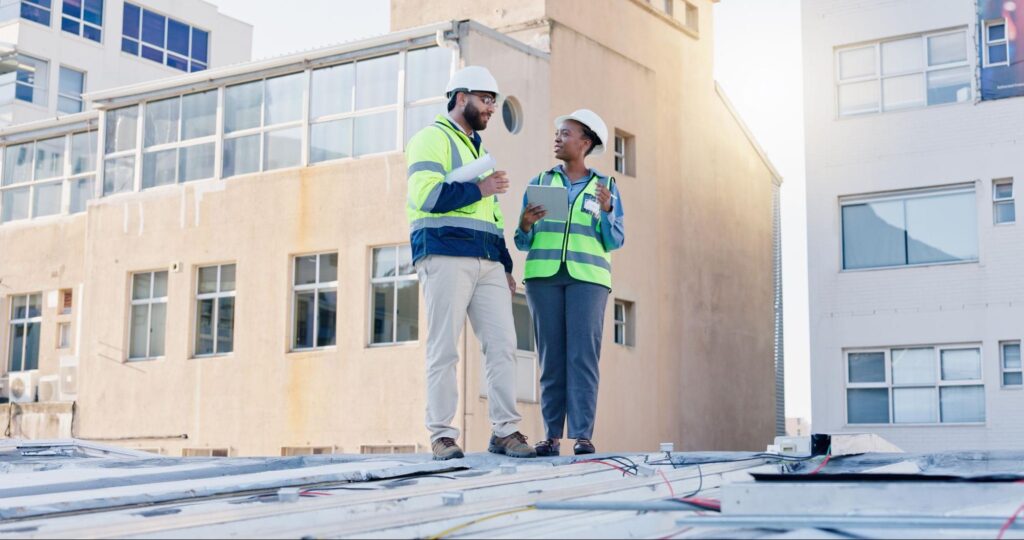Spotting Commercial Roof Damage: A Business Owner’s Essential Guide

Damage to your commercial roof can compromise its structural soundness, leading to water intrusion, energy inefficiency, and material breakdown. Catching these issues early not only safeguards your investment but also slashes ongoing maintenance expenses. Did you know that putting off repairs can inflate restoration costs by as much as 65 percent? This guide dives into the common signs that your commercial roof needs immediate attention, covering six key areas: why early detection is paramount, visible damage indicators, performance-based clues, storm-related wear and tear, material-specific warnings, and the crucial first steps for business owners. By the end, you’ll be equipped to identify trouble on TPO, EPDM, and metal roofs, extend your roof’s life, and know precisely when to call in the experts in Santa Barbara.
Why Early Detection of Commercial Roof Damage is a Game-Changer for Business Owners
Spotting roof damage early means uncovering hidden deterioration before leaks become a significant headache, preserving your building’s performance, and significantly cutting down on future repair bills. Addressing minor issues promptly allows you to tackle membrane punctures, flashing failures, and sealant gaps while they’re still manageable.
Catching damage in its infancy offers three key advantages:
- Extended lifespan through focused upkeep
- Minimized operational disruptions from unexpected leaks
- Protected property value by preventing structural decay
By acting on the first signs of wear, business owners can sidestep costly replacements and maintain seamless operations, paving the way to recognizing the most common visible damage cues.
What Are the Financial Pitfalls of Overlooking Roof Damage?
Ignoring small cracks and membrane blisters invites water infiltration that can escalate into serious problems like interior ceiling collapses or the need for insulation replacement. Repair expenses snowball as moisture spreads, leading to emergency restoration costs that frequently blow past planned maintenance budgets. In the worst-case scenarios, water damage to electrical systems or inventory can trigger business interruptions and drive up insurance premiums, making proactive inspections a smart, cost-effective shield against budget-busting surprises and operational downtime.
How Does Catching Roof Damage Early Extend Its Lifespan?
Identifying and fixing minor membrane tears, flashing gaps, or sealant shrinkage prevents water from compromising the substrate and insulation layers. Regular inspections empower service technicians to apply targeted sealants or patch kits that restore weatherproofing, effectively extending the roof’s functional life by up to 50 percent. This maintenance-first strategy preserves the original membrane warranty, reduces the need for full replacements, and optimizes the total lifecycle costs for commercial properties throughout North Georgia.
What Safety Hazards Emerge from Delayed Roof Repairs?
Putting off roof repairs can weaken the structural deck, leading to sagging sections that create fall hazards for maintenance crews and risk sudden roof collapse under the weight of accumulated water. Moisture-driven mold and mildew growth within occupied spaces poses health risks to employees and visitors, potentially triggering respiratory issues or liability claims. Addressing damage promptly ensures a safe working environment and maintains compliance with building codes, safeguarding occupant well-being and operational continuity.
How to Pinpoint Water Leaks and Interior Stains?
Water leaks often show up as dark stains on ceilings, peeling paint, or blistered drywall, particularly near roof penetrations like HVAC curbs and plumbing vents. Keep an eye out for:
- Unusual brown or yellow discoloration on ceiling tiles
- Dripping water or damp insulation in attic spaces
- Mold or white powdery deposits near perimeter walls
Noticing these moisture-related signs is a clear signal that the membrane’s integrity has been compromised, naturally leading to an evaluation of ponding water on flat roofs.
What Does Ponding Water Look Like on Flat Commercial Roofs?
Ponding water refers to standing water that remains on a flat or low-slope roof for more than 48 hours after rain. It typically appears as shallow pools, reflective surfaces in low spots, or algae growth in consistently wet areas. Ponding puts significant stress on the roof, accelerating membrane fatigue and seam separation. It’s crucial to address drainage issues before this structural strain intensifies and leads to more severe failures.
How to Spot Cracks, Blisters, and Membrane Deterioration?
Membrane deterioration can manifest as surface cracks, raised blisters, or thinning areas on TPO, EPDM, and metal roofs. Common indicators include:
- Linear splits or fissures that expose underlying substrate layers
- Rounded air pockets forming beneath the membrane surface
- Rust spots or corrosion patterns appearing on metal panels
These defects compromise the roof’s waterproofing capabilities and often originate around seams and fasteners, highlighting the importance of inspecting flashing integrity next.
What Are the Signs of Damaged or Missing Roof Flashing?
Flashing is designed to protect roof edges, joints, and penetrations by directing water away from vulnerable seams. Signs of damage include:
- Visible gaps or rusted sections where walls meet the roof
- Loose or missing metal strips along parapet walls
- Sealant shrinkage and cracking around roof penetrations like curbs
When flashing fails, moisture can bypass the membrane, underscoring the importance of recognizing sagging or uneven roof surfaces.
How to Identify Sagging or Uneven Roof Surfaces?
Sagging areas suggest compromised decking support or waterlogged insulation. Look for:
- Visible dips or deflected sections in the roof plane
- Shallow troughs that tend to collect debris and moisture
- Localized pooling that exacerbates structural strain
Identifying surface irregularities early guides inspectors toward performance-based assessments, such as analyzing energy bills.
Performance Issues That Signal Underlying Commercial Roof Problems
Performance issues, such as escalating energy costs and complaints about indoor air quality, often point to failures in roof insulation and moisture intrusion. Monitoring these symptoms can reveal hidden damage that might be missed during a visual inspection.
How Do Increased Energy Bills Hint at Roof Damage?
A compromised roof membrane or degraded insulation allows more heat to transfer through the building envelope, forcing HVAC systems to work harder and consume more power. Comparing energy costs month-over-month can reveal spikes of 10–30 percent, indicating thermal inefficiencies. Tracking utility bills and cross-referencing them with inspection findings can confirm whether roof repair is the key to reducing rising operational expenses.
What Are the Signs of Mold, Mildew, or Musty Odors Inside Buildings?
Persistent musty smells, visible mold colonies on ceilings, and mildew streaks on walls are telltale signs of chronic moisture entering through the roof system. These health and safety hazards occur when water seeps past damaged membranes, settling into insulation or structural wood. Promptly addressing these indoor air quality concerns helps prevent regulatory violations, protects occupant health, and restores a comfortable environment.
How Storm Damage Impacts Commercial Roofs and What to Look For

Severe weather events, including high winds, hail, and flying debris, can cause immediate membrane punctures, dislodge sealants, and inflict structural damage. Post-storm inspections are crucial for assessing the full extent of the impact before leaks or structural failures occur.
What Are the Common Signs of Wind, Hail, and Debris Damage?
Storm damage typically shows up as:
- Wind lift, causing membrane seams to curl upwards
- Dents, punctures, or cracks from hail impacts
- Abrasions or scratches where loose branches and debris have scraped the roof
How Can You Assess Roof Damage After Severe Weather Events?
A thorough post-storm evaluation involves:
- A perimeter inspection for loose or missing ballast materials
- A surface scan using binoculars to spot punctures and tears
- An interior check for new leaks or water stains
- Drone surveys to inspect hard-to-reach areas
Conducting this assessment within 48 hours of high-wind or hail events ensures that issues are documented for warranty claims and insurance purposes, helping to guide the decision between repair and replacement.
When Is Storm Damage Repair Necessary Versus Replacement?
Repair is generally suitable when punctures, seam separations, or minor membrane tears affect less than 15 percent of the roof surface and the underlying substrate remains sound. Replacement becomes necessary when widespread membrane wear, extensive history of ponding water, or underlying deck damage compromises long-term performance. Evaluating the feasibility of repair against the roof’s remaining lifespan and cost projections clarifies the best path forward for business continuity.
How Different Roofing Materials Reveal Damage
Each roofing material exhibits unique deterioration patterns. Understanding these distinctions allows for precise inspections and targeted repairs. The table below compares material-specific indicators and their consequences.
| Roofing Material | Common Damage Indicator | Impact on Building |
|---|---|---|
| TPO Membrane | Linear cracking and seam splits | Accelerated UV degradation and moisture entry |
| EPDM Membrane | Punctures and adhesive failures | Thermal loss and increased leak risk |
| Metal Panels | Corrosion spots and loose fasteners | Structural instability and accelerated rust |
What Are the Unique Damage Indicators for TPO Roofing Systems?
TPO systems often show linear splits along field seams and shrinkage cracks in areas with high foot traffic. These splits create pathways for rainwater to penetrate beneath the membrane, compromising the heat-welded seams that seal the system.
How to Spot Damage on EPDM Roof Membranes?
EPDM can exhibit surface tears from foot traffic or sharp debris, breakdown of seam adhesives around the edges, and chalking on the rubber surface. Missing factory splice tape or failures in peel-and-stick applications indicate that moisture has bypassed critical watertight seals.
What Are the Warning Signs of Metal Roof Damage?
Metal roofs may show rust spots around fastener penetrations, panel buckling due to thermal expansion, and loose screws or clip systems. Corrosion frequently starts at seams and ridge caps, degrading the metal’s protective coatings and leading to structural weakening.
How Does Roof Age Affect Damage Appearance Across Materials?
As roofs age, all materials tend to thin, lose flexibility, and become brittle due to UV exposure. An older TPO roof might display widespread surface crazing, while aged EPDM loses elasticity, leading to more frequent punctures. Metal panels nearing the end of their lifespan often develop pervasive corrosion, signaling that replacement is imminent rather than repair.
How to Conduct a Basic Commercial Roof Inspection Checklist?
Before contacting a specialist, business owners can perform a preliminary assessment using this inspection guide:
| Step | Inspection Action | What to Look For |
|---|---|---|
| 1. Perimeter Walk | Examine parapets and gutters | Accumulated debris, displaced flashing |
| 2. Surface Scan | Use binoculars to view the membrane | Blisters, cracks, punctures |
| 3. Interior Review | Check ceilings and attic spaces | Stains, mold growth, signs of dripping |
| 4. Drainage Inspection | Clear and observe drains and scuppers | Slow drainage, standing water |
| 5. Documentation | Photograph and record all findings | Date-stamped images for maintenance records |
What Are the Benefits of Scheduling Commercial Roof Repair or Replacement Early?
Scheduling repairs or replacements before peak seasons ensures better contractor availability, reduces premiums for emergency services, and helps maintain warranty coverage. Early action also avoids potential supply chain delays for roofing materials and guarantees that work is completed under optimal weather conditions, maximizing repair quality and minimizing operational disruption.
Don’t Let Roof Damage Catch You Off Guard

Santa Barbara businesses can’t afford to overlook roofing issues. Whether it’s bubbling membranes, flashing failures, or sneaky leaks, early detection saves money and downtime. Infinity Roofers offers fast inspections and expert repairs so you can get ahead of the damage—and stay there. Call us today and keep your commercial property protected year-round!
❓ FAQ: Commercial Roof Damage in Santa Barbara—What Should You Know?
Does Santa Barbara’s weather cause specific types of roof damage?
Absolutely. Coastal air speeds up corrosion, and high UV exposure can cause membrane shrinkage or blistering. Wind uplift near the beach is also more common. Routine inspections tailored to our climate are essential for prevention.
How often should you schedule roof inspections for your Santa Barbara commercial property?
Twice a year is ideal—once before the rainy season and once after. If your business is near the coast or has large rooftop equipment, you might benefit from quarterly checkups. Regular maintenance ensures minor issues don’t become big repairs.
🔗 Explore More Commercial Roofing Tips
Want to get ahead of future roofing issues, material upgrades, and pro tips to protect your investment? Head over to the Infinity Roofers Blog for everything you need to know—designed specifically for Santa Barbara business owners like you.
